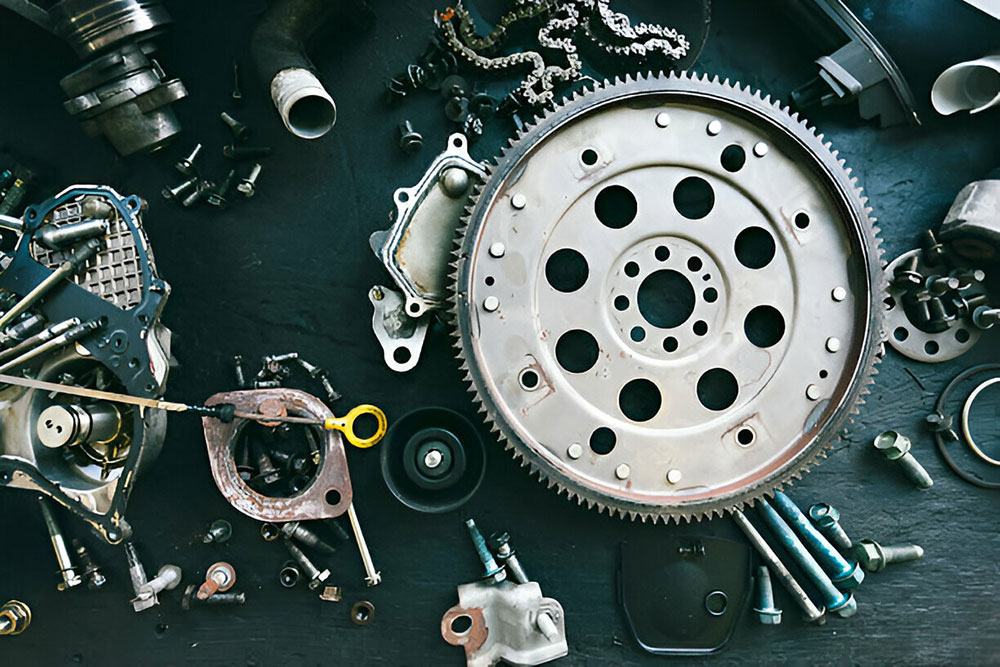
Introduction to Exporting Engineering Goods from India
India’s engineering sector has established itself as a significant contributor to the global market, offering a diverse range of products that meet international standards. The sector’s growth is fueled by robust manufacturing capabilities, skilled labor, and technological advancements. Exporting engineering goods from India plays a crucial role in bolstering the nation’s economy, providing numerous benefits to businesses and the country as a whole.
Globally, there is a rising demand for Indian engineering products, driven by their cost-effectiveness and quality. Indian manufacturers have honed their expertise in producing a wide array of engineering goods, including machinery, automotive components, and electrical equipment. This global demand has opened up ample opportunities for Indian exporters to expand their market reach and enhance their business prospects.
The engineering sector is a cornerstone of India’s economic development. It accounts for a substantial share of the country’s industrial output and employment. By tapping into export markets, Indian companies not only increase their revenue streams but also contribute to the nation’s foreign exchange reserves. This, in turn, strengthens India’s economic stability and growth potential.
Engaging in export activities offers several advantages for Indian businesses. It enables them to diversify their market base, reducing dependency on domestic demand. Exporting also fosters innovation and quality improvement, as companies strive to meet the stringent standards of international markets. Moreover, it enhances the global competitiveness of Indian engineering goods, paving the way for sustained growth and development in the sector.
In summary, the significance of exporting engineering goods from India cannot be overstated. It provides a pathway for economic prosperity, job creation, and technological advancement. As the global demand for high-quality, cost-effective engineering products continues to rise, Indian exporters are well-positioned to seize these opportunities and make a lasting impact on the global stage.
Understanding the Types of Engineering Goods for Export
India boasts a diverse array of engineering goods, which play a pivotal role in the country’s export economy. These goods fall into several key categories, each with its own unique products and target markets. The first major category is machinery, which includes industrial machines, agricultural equipment, and construction machinery. Indian machinery is renowned for its durability and cost-effectiveness, making it highly sought after in markets across Asia, Africa, and Latin America.
The second category encompasses automotive components. India is a global hub for automobile part manufacturing, producing everything from engine parts and transmissions to braking systems and electrical components. Countries in Europe and North America are significant importers of Indian automotive components, given their adherence to international quality standards and competitive pricing.
Metal products form the third category of engineering goods. This includes a wide range of items such as steel, aluminum, and copper products, which are essential in various industries including construction, automotive, and aerospace. Indian metal products are exported globally, with major markets in the United States, China, and the Middle East. The country’s robust metalworking industry ensures a steady supply of high-quality metal products.
Industrial equipment is another critical category, encompassing items like pumps, valves, compressors, and material handling equipment. These products are indispensable in sectors such as manufacturing, oil and gas, and chemical processing. Indian industrial equipment is known for its reliability and technological advancements, finding markets in regions like Southeast Asia, Africa, and South America.
Finally, electrical machinery is a significant segment of engineering goods exports. This includes transformers, generators, and electric motors, which are crucial for power generation and distribution. Indian electrical machinery is exported to various parts of the world, including Europe, Africa, and the Middle East, due to its efficiency and compliance with international standards.
By understanding the diverse types of engineering goods that India exports, businesses can better navigate the global market and identify opportunities for growth and expansion.
Identifying Sources of Engineering Goods for Export
Identifying reliable sources of engineering goods within India is crucial for exporters aiming to penetrate international markets. The country boasts several manufacturing hubs and key industrial regions renowned for their engineering products. Notable among these is the state of Maharashtra, particularly the cities of Mumbai and Pune, where numerous companies engage in the production of high-quality automotive components, machinery, and electronic goods. Gujarat, with its robust industrial infrastructure, also stands out, particularly in the cities of Ahmedabad and Vadodara, which are known for their chemical, mechanical, and electrical engineering products.
Similarly, Tamil Nadu, especially Chennai and Coimbatore, is another significant player in the engineering goods sector. Chennai is well-known for its automotive industry, while Coimbatore excels in the manufacture of pumps, motors, and textiles machinery. Karnataka, with Bengaluru as its epicenter, serves as a technological and engineering hub, producing a wide array of goods from aerospace components to high-tech machinery.
Furthermore, the role of small and medium enterprises (SMEs) in the supply chain cannot be overstated. These SMEs, scattered across different states, contribute substantially to the engineering goods sector. They often specialize in niche products and innovative solutions, providing a diverse range of goods that enhance the overall export repertoire. Cities like Ludhiana in Punjab, renowned for its bicycle and auto parts manufacturing, and Rajkot in Gujarat, known for its machine tools industry, are prime examples of how SMEs bolster the engineering goods supply chain.
In conclusion, exporters have a multitude of options when it comes to sourcing engineering goods within India. By leveraging the strengths of various industrial regions and the capabilities of both major companies and SMEs, exporters can ensure a consistent and high-quality supply of engineering products tailored to meet global standards and demands.
Compliance and Regulatory Requirements
Exporting engineering goods from India necessitates strict adherence to a myriad of regulatory requirements. These measures are pivotal in ensuring that the exported products meet the necessary standards and regulations of the destination countries. One of the primary requisites is obtaining an export license from the Directorate General of Foreign Trade (DGFT). The DGFT plays a crucial role in regulating and facilitating exports, and its guidelines must be meticulously followed to ensure smooth export operations.
Securing an export license involves several steps, including registering with the DGFT and obtaining an Importer Exporter Code (IEC). The IEC is a mandatory identification number for any Indian entity engaged in import and export activities. Without this code, no goods can be legally exported from India. Additionally, exporters must be aware of specific product classifications under the Harmonized System (HS) code and ensure that their goods are correctly categorized to avoid any legal complications.
Quality certifications are another critical aspect of compliance. Engineering goods often need to conform to international quality standards such as ISO certifications. These certifications not only enhance the credibility of the products but also assure international buyers of the quality and safety of the goods. Adhering to these standards is essential for gaining market access and maintaining a competitive edge in the global marketplace.
Furthermore, various international standards and regulations must be complied with, depending on the destination country. These can include environmental regulations, safety standards, and specific technical requirements. Exporters need to stay updated on these regulations to ensure their products meet all necessary criteria. Failure to comply with these standards can result in shipment rejections, financial losses, and damage to the exporter’s reputation.
Organizations like the Export Inspection Council (EIC) and the Bureau of Indian Standards (BIS) also play significant roles in ensuring that engineering goods meet required standards. The EIC provides quality assurance and certification for products, while the BIS sets the benchmarks for product standards. Collaborating with these organizations can aid exporters in navigating the complex regulatory landscape and achieving compliance efficiently.
Logistics and Transportation Considerations
Logistics play a pivotal role in the export process of engineering goods from India. Choosing the appropriate mode of transportation—whether sea, air, or land—is crucial for ensuring timely and cost-effective delivery. Each mode offers distinct advantages and challenges.
Sea transport is often the most economical option for shipping bulk engineering goods. It allows for the transportation of large quantities at a lower cost compared to air freight. However, it involves longer transit times, which might not be suitable for urgent shipments. Ports such as Mumbai, Chennai, and Kolkata are key nodes in India’s maritime logistics network, facilitating extensive global reach.
Air transport, on the other hand, is ideal for high-value or time-sensitive engineering goods. While it is significantly more expensive, it ensures faster delivery times and offers a higher level of security. Major international airports like Indira Gandhi International Airport in Delhi and Chhatrapati Shivaji Maharaj International Airport in Mumbai serve as critical hubs for air cargo.
Land transport, primarily through road and rail, provides flexibility and is often used for transporting goods to and from ports and airports. It is particularly useful for cross-border trade within the South Asian region. However, one must consider road conditions, rail infrastructure, and border regulations that could impact transit times and cost.
Packaging requirements are another essential aspect to consider. Engineering goods often require specialized packaging to prevent damage during transit. This includes using robust materials, proper cushioning, and sometimes customized crates. Adhering to international packaging standards is not only important for protecting the goods but also for meeting the regulatory requirements of the destination country.
Freight forwarding services play a crucial role in managing the complexities of shipping engineering goods internationally. A reliable freight forwarder can handle documentation, customs clearance, and coordination with various transportation services, ensuring a smooth process. Building relationships with dependable logistics partners can significantly enhance the efficiency and reliability of the export process.
In summary, careful consideration of transportation modes, packaging needs, and the selection of reliable logistics partners are vital components in the successful export of engineering goods from India. By optimizing these logistics elements, exporters can ensure their goods reach international markets efficiently and in excellent condition.
Market Research and Identifying Target Markets
Conducting thorough market research is a crucial step in the process of exporting engineering goods from India. Market research helps exporters understand the demand for their products, identify potential target markets, and develop effective market entry strategies. It involves gathering and analyzing data on various factors such as market size, growth potential, competition, and consumer preferences.
One of the first steps in market research is to identify the markets that have a high demand for specific engineering goods. This can be done by analyzing trade data, industry reports, and market trends. Exporters should look for markets that have a growing infrastructure sector, rapid industrialization, or a high demand for technological advancements. Additionally, understanding the regulatory environment and trade policies of the target market is essential to ensure compliance and avoid potential trade barriers.
Understanding cultural considerations is another vital aspect of market research. Different markets have different cultural norms, business practices, and consumer behaviors. Exporters need to tailor their marketing strategies to align with the cultural preferences of the target market. This includes adapting product designs, packaging, and promotional materials to resonate with the local audience. Building relationships with local partners or distributors can also aid in navigating cultural nuances and establishing a strong market presence.
Market entry strategies play a significant role in the success of exporting engineering goods. There are various approaches to entering a new market, such as direct exporting, establishing joint ventures, or setting up local subsidiaries. Each strategy has its own set of advantages and challenges. Direct exporting allows exporters to maintain control over their products and pricing, while joint ventures and local subsidiaries provide better market penetration and local market knowledge. Exporters should carefully evaluate their resources, capabilities, and long-term goals to choose the most suitable market entry strategy.
In summary, conducting comprehensive market research and identifying target markets are fundamental to the success of exporting engineering goods from India. By understanding market demand, cultural considerations, and market entry strategies, exporters can effectively navigate the complexities of international trade and achieve sustainable growth in global markets.
Marketing and Promoting Engineering Goods Internationally
Effective marketing strategies are essential for successfully exporting engineering goods from India. To reach international buyers, manufacturers and exporters must employ a mix of traditional and contemporary marketing techniques. One of the most impactful ways to showcase products and connect with potential buyers is through participation in international trade fairs. These events offer a platform to demonstrate product capabilities, engage directly with industry professionals, and establish valuable business relationships.
Online marketing has become increasingly important in the digital age. Creating an engaging online presence through a user-friendly website, social media platforms, and digital advertisements can significantly enhance visibility among global buyers. Search engine optimization (SEO) and content marketing are key components of online marketing that help in attracting and retaining international clients. Additionally, listing products on international e-commerce platforms and B2B marketplaces can broaden exposure and facilitate smoother transactions.
Establishing foreign partnerships is another critical aspect of international marketing. Collaborating with foreign distributors, agents, and partners can provide local market insights and facilitate smoother entry into new markets. These partnerships can also help in navigating regulatory requirements and understanding cultural nuances, which are pivotal for successful market penetration.
Export promotion councils and trade bodies play a crucial role in supporting exporters. Organizations such as the Engineering Export Promotion Council (EEPC) of India offer various services, including market research, trade delegations, and support in regulatory compliance. These bodies provide valuable resources and networking opportunities, which can be instrumental in expanding an exporter’s reach.
Overall, a well-rounded marketing approach that combines participation in trade fairs, robust online marketing strategies, and strategic foreign partnerships, supported by the resources and expertise of export promotion councils, can significantly boost the export of engineering goods from India. These strategies collectively enhance visibility, build credibility, and facilitate successful entry into international markets.
Challenges and Opportunities in Exporting Engineering Goods
Exporting engineering goods from India presents a unique set of challenges and opportunities for businesses. One of the primary hurdles is the intense competition in the global market. Indian exporters often face stiff competition from established players in countries like China, Germany, and the United States, where manufacturing processes are highly optimized, and production costs can be lower. Additionally, regulatory barriers such as stringent quality standards and compliance requirements in different countries can complicate the export process, necessitating significant investments in certifications and quality assurance.
Currency fluctuations further add to the complexity, as the value of the Indian Rupee can be volatile. This unpredictability can impact pricing strategies and profit margins for exporters. Businesses must employ robust financial strategies and utilize hedging mechanisms to mitigate the risks associated with foreign exchange variations. Moreover, logistical issues such as inadequate infrastructure and lengthy customs procedures can delay shipments, affecting the reliability and reputation of Indian engineering goods in international markets.
Despite these challenges, there are also significant opportunities for Indian exporters of engineering goods. The emergence of new markets, particularly in developing countries across Asia, Africa, and Latin America, offers substantial growth potential. These regions are experiencing rapid industrialization and urbanization, driving demand for engineering products such as machinery, electrical equipment, and automotive components.
Technological advancements also present a promising avenue for growth. Innovations in manufacturing processes, such as automation and the adoption of Industry 4.0 technologies, can enhance productivity and quality, providing a competitive edge to Indian exporters. Furthermore, the Indian government offers various incentives to promote exports, including financial assistance, tax benefits, and the establishment of Special Economic Zones (SEZs). These initiatives aim to encourage businesses to expand their global footprint and leverage India’s manufacturing capabilities.
In summary, while the export of engineering goods from India is fraught with challenges, the opportunities are equally compelling. By navigating the competitive landscape, adapting to regulatory requirements, and capitalizing on emerging markets and technological innovations, Indian exporters can successfully tap into the global market and achieve sustainable growth.



